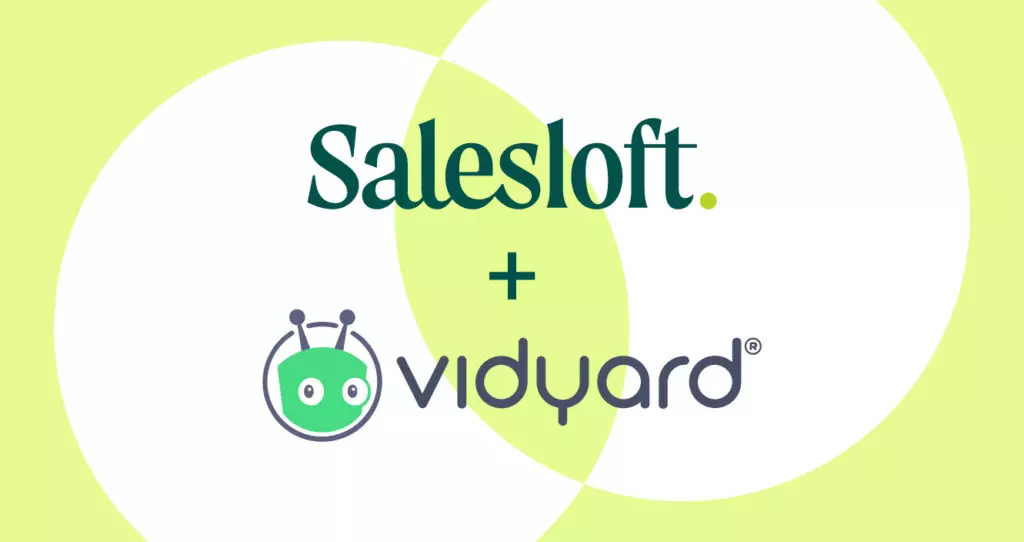25 Sales Statistics That Prove Why You Should Be Using Video for Virtual Selling
July 14, 2023·10 min read
Still not convinced about using video for virtual selling? Check out these 25 thought-provoking or downright head-scratching sales statistics to see why video is your very best sales tool.
By now, you’ve heard all kinds of things about virtual selling using video. With many people working from home (at least partially) for the foreseeable future, video is the best way to reach right through prospects’ computer screens and grab their attention.
And if you’re not using video yet…Well, your quota is just a suggestion, right? (Wrong.)
We’ve assembled 25 eye-popping sales statistics to show you what the future of virtual selling will look like, why video is such a core part of the virtual sales process, and how video has propelled sellers just like you from merely surviving to thriving in this brave new world. Ready to learn more? Keep reading.

 See what’s in store for the future of sales and remote selling. Get the Report
See what’s in store for the future of sales and remote selling. Get the Report Part 1: Peeking into the Future of Virtual Selling
#1: Over 90% of sales pros report that their team is fully remote or works from the office part-time, and nearly all (96%) want to continue working this way. (Vidyard) Tweet This!
What It Means: If your company has transformed into a hybrid or fully remote work environment, you’re not the exception—you’re the norm. The same is true for your prospects. Many businesses aren’t going back to the office in a full capacity, so you need to rethink all those tactics you used to use back in the days when you could find your prospects at their desks.
#2: 63% of sales leaders say virtual meetings are equally or more effective than in-person meetings. (HubSpot) Tweet This!
What It Means: Hope you weren’t banking it all on that flawless handshake. Most of your sales calls these days are probably over Zoom or Microsoft Teams, so you need to learn to shine through a digital connection. (Tip: Make everyone’s day easier by turning those synchronous video meetings into asynchronous video round-ups that they can watch at their own pace.)
#3: More than three-quarters of buyers and sellers prefer digital self-serve and remote human engagement over face-to-face interactions. (McKinsey) Tweet This!
What It Means: It turns out that the whole “remote engagement” thing is better for everybody involved. Prospects like it better, and it’s easier for sellers to make inroads. Thus, don’t expect things to go back to the in-person status quo any time soon.
#4: 75% of decision-makers think remote engagement serves customers just as well or better than before the shift to remote. (McKinsey) Tweet This!
What It Means: Virtual sales really greases up the selling process. Going virtual makes it easier to do things like provide additional context, get together for those milestone sales meetings, and stay connected with your prospects.
#5: 76% of sales leaders believe that remote sales interactions are equally or more effective than traditional in-person engagement when prospecting for new customers. (McKinsey) Tweet This!
What It Means: Is virtual sales engagement actually better than in-person engagement? A lot of sales authorities say so. Virtual selling isn’t a band-aid fix or a temporary measure—it’s a concrete way for sellers to score better sales results than ever before.
#6: The top five remote or hybrid technologies sales pros would take with them to their next job are Salesforce, Vidyard, Salesloft, Outreach, and Gong. (Vidyard) Tweet This!
What It Means: The sales tech landscape has ballooned in the last few years, and the tech that tracks deals and engagement and tools to drive business forward is top of mind for reps, regardless of where they land in their careers.
#7: More than three-quarters of sales pros have adopted a structured sales cadence to guide them in reaching out to new prospects. (Vidyard) Tweet This!
What It Means: More reps are following structured sales cadences with the help of sales engagement platforms. It’s getting hard to reach buyers and get responses, so adopting structured outbound omnichannel outreach approaches is the key to getting more responses and booking those initial meetings with prospects.
Part 2: How Many Virtual Sales Pros are Using Video?
#8: Nearly 60% of sales pros are using video messaging in the sales process. (Vidyard) Tweet This!
What It Means: In just a few years, video selling went from a niche tool to a must-have. It became so much more difficult to connect with prospects using traditional means. Video ballooned to fill that gap, helping sellers reach prospects even if they can’t meet in person.
#9: Over 70% of sales leaders who aren’t using video messaging plan to roll it out in the near future. (Vidyard) Tweet This!
What It Means: If you’re a sales rep reluctant to use video for sales, you might want to change your mind as more leaders and sales enablement teams will continue to focus on it as a tactic for supporting the sales process.
#10: 68% of customer success and experience reps now use video in their processes (Vidyard) Tweet This!
What It Means: Revenue retention will continue to be paramount in the coming year (and beyond). Customer success teams are unlocking the power of video for retention and upsell opportunities.
#11: Outbound prospecting is the top use case for sales professionals. (Vidyard) Tweet This!
What It Means: Video prospecting is where video messaging is most widely known but is growing and seeing success in areas such as follow-ups and product or solution demos.
#12: 62% of sales pros say that some of their team uses video messages. Only 18% of leverage video across their entire team. (Vidyard) Tweet This!
What It Means: Further productivity gains, cost savings, and best practices can be realized if the entire team gets on board. Leveraging a video platform for sales, teams can manage video libraries, share best practices, and leverage robust integrations and video analytics.
#13: Most sales pros (63%) send at least one custom-recorded video weekly, with nearly one-quarter reporting they send at least one video daily. (Vidyard) Tweet This!
What It Means: For many sellers, success, and efficiency come with practice. However, you don’t need to send more videos to one prospect to make an impact. Adding just a few to an overall outbound cadence can make a huge difference.
Part 3: Why Video Makes Sales Prospects Pay Attention
#14: People are 13% more likely to remember details from video emails over text emails. (B2B DecisionLabs) Tweet This!
What It Means: Our brains retain more information when we actually see something instead of just reading about it. If you really want to impress a point upon your prospects, transmit that information through a video instead of a text email they’ll just skim.
#15: Video email can reduce inbox fatigue and help recipients retain more of the message when compared to text-based email. (B2B DecisionLabs) Tweet This!
What It Means: Looking at your inbox actually puts you in a negative emotional state. However, watching a video helps reverse that negative effect, leveling out your emotions. Thus, a video email is a great way to break up the monotony of your prospect’s inbox, putting them in an emotional state where they’re more inclined to listen to your pitch.
#16: 65% of viewers watch a business-related video all the way through if it’s less than 60 seconds long. (Vidyard) Tweet This!
What It Means: Sending 10-minute video epics? Don’t. The shorter, the better. Get your message across in a minute or less; your prospects will be way more likely to watch it through to the end.
Part 4: Video’s Impact on Virtual Selling
#17: After adding video to emails, ReviewTrackers saw a 22% greater open rate, a 4% larger click rate, and a 92% higher reply rate. (JB Sales Group) Tweet This!
What It Means: Adding video to your emails gets results for marketers and sellers alike. Want prospects to open your emails and send you replies? Trying adding a video.
#18: The majority of sales pros agree that video email performs better than text-based email. (Vidyard) Tweet This!
What It Means: It’s increasingly clear that text-only emails are dull, uninspired, and bad at catching attention. Video, on the other hand? Sending one to your prospect makes them sit up and pay attention to what you have to say.
#19: 63% of sales pros report that leveraging video messaging has increased response rates. (Vidyard) Tweet This!
What It Means: A huge majority of virtual sellers are seeing great success with videos. The stats don’t lie: Receiving a personal video makes prospects more likely to reply.
#20: Over half of sales pros report that hybrid video delivers the highest response rate. (Vidyard) Tweet This!
What It Means: What’s a hybrid video? It’s a video where you show both your webcam and your recorded screen. Example: Showing something that caught your attention on your prospect’s website or LinkedIn profile while including your talking head in the corner. It’s a great way to communicate information while flexing your charisma, and far better than a faceless voiceover.
#21: Nearly half of sales pros who leverage video report that it has increased their close rates. (Vidyard) Tweet This!
What It Means: Videos are great for connecting with prospects, but they remain just as useful all the way through the sales cycle. It’s like a personal, almost face-to-face check-in at every stage of the process instead of just a brief, emotionless email.
#22: 74% of sales pros report they’ve been able to maintain or increase their productivity with the use of video. (Vidyard) Tweet This!
What It Means: Recording videos can seem intimidating, but once sellers get their technique down, they can produce and send off videos just as quickly as (or maybe even faster than) writing an email or making a sales call.
#23: Over one-third of sales pros say custom-recorded videos shorten their deal cycle. (Vidyard) Tweet This!
What It Means: Videos show your sincerity, demonstrate what makes your product different, and cement trust. People are more inclined to buy from people they know and trust; video is a shortcut to establishing that familiarity ASAP.
#24: Using video in tech-enabled sales outreach increases responses. (Vidyard) Tweet This!
What It Means: Sales pros report that buyers are 50% more responsive to messages sent via sales engagement platforms or other sales technologies when at least one video is included as part of the sales cadence.
#25: 64% of account managers and executives report they are satisfied with the results they are getting from using video to support their deal cycles. (Vidyard) Tweet This!
What It Means: Virtual selling experts spill a lot of ink extolling the virtues of video for sales, and for good reason—video really does work! It’s a key tool for any virtual seller trying to make it in this wild new world of sales. The sooner you get on board, the sooner you’ll start seeing the same results.
Kickstart Your Virtual Selling Strategy
Feeling enlightened? We hope that these virtual sales statistics spark some ideas for bold new selling ideas.
The stats tell the story—video is incredibly effective as part of your virtual selling strategy. Want to start exploring video for yourself? Sign up for Vidyard and take advantage of the free video creation and sharing tools that thousands of sales pros already love.
This post was originally published on September 28, 2021. It was updated on July 14, 2023.



